Sigma 135mm f/1.4 DG Art Review: Massive and Magnificent
I absolutely love the 135mm focal length, and feel like it’s quite underrepresented on modern mirrorless mounts. It’s a great choice for portraits, candids, indoor sports, and street photography. So when I heard Chris Niccolls would be unavailable to review the new Sigma 135mm f/1.4 DG Art lens, I jumped at the chance!
Available in Sony E-mount or Leica L-Mount, this lens is especially compelling because, at $1,899, it is a similar price to the 135mm f/1.8 options from Sony, Canon, and Nikon, but offers two-thirds of a stop more light-gathering potential.
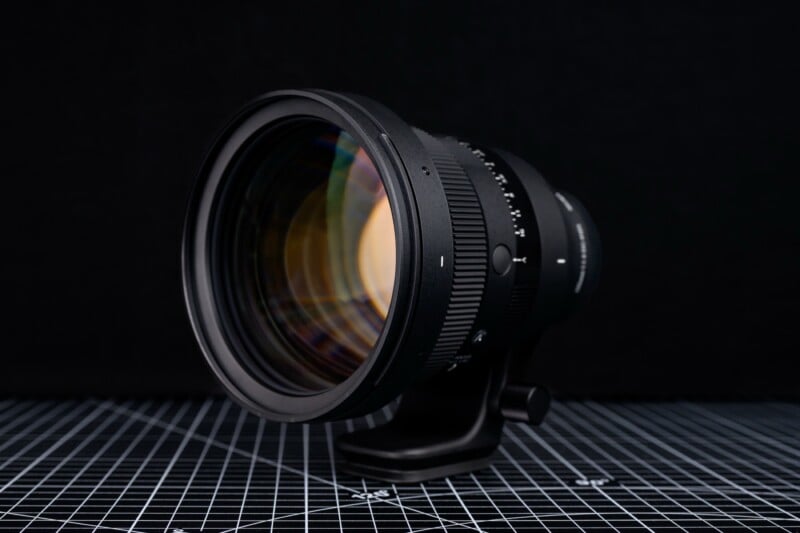
Sigma 135mm f/1.4 DG Art: How It Feels
“Portly” and “professional” are the two words I would use to describe this optic. Weighing in at 1,430 grams (50 ounces), this lens is a considerable amount to carry around and is similar to many 70-200mm f/2.8 lenses. Well, almost, because since it is also short, it can feel oddly unbalanced on the Sony a7R V that I tested it on. There is a massive front element with a 105mm filter diameter, which necessitates a similar giant hood.
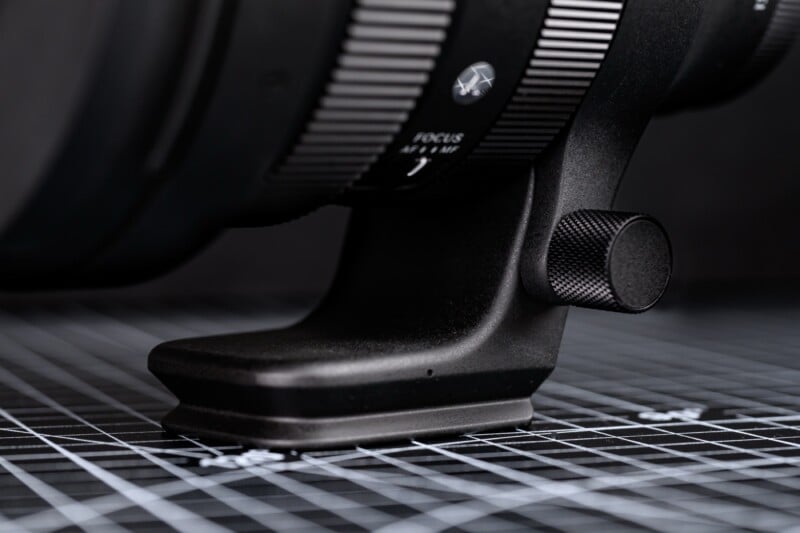
Recognizing this, Sigma thankfully includes a tripod collar that can be easily rotated for vertical shooting, with the foot cut for Arca Swiss dovetails. I found the tripod foot more comfortable to hold than the camera body when walking around the streets of Calgary.
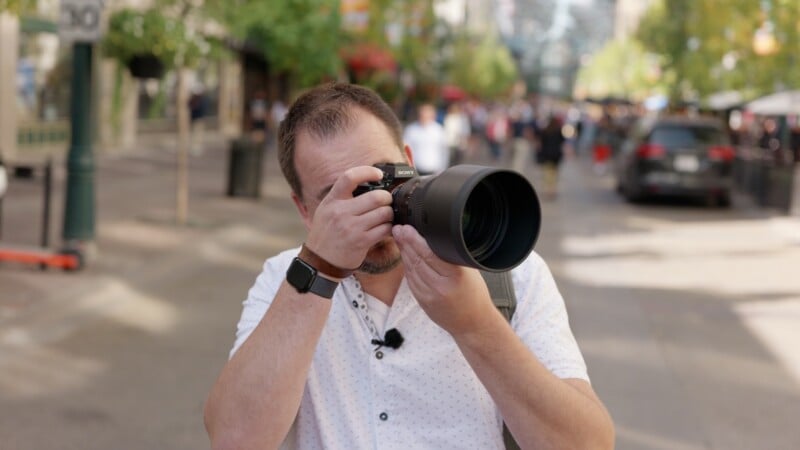
![]()
![]()
In terms of controls, there is a de-clickable aperture ring, a well-damped focus ring, an autofocus / manual focus selector switch, a custom button, and an aperture lock. Noticeably, there is no switch for optical stabilization as it is not offered in this optic. You will have to rely on in-body image stabilization with this lens. The Sigma 135mm f/1.4 DG Art is weather sealed and has a very polished, professional feel to it.
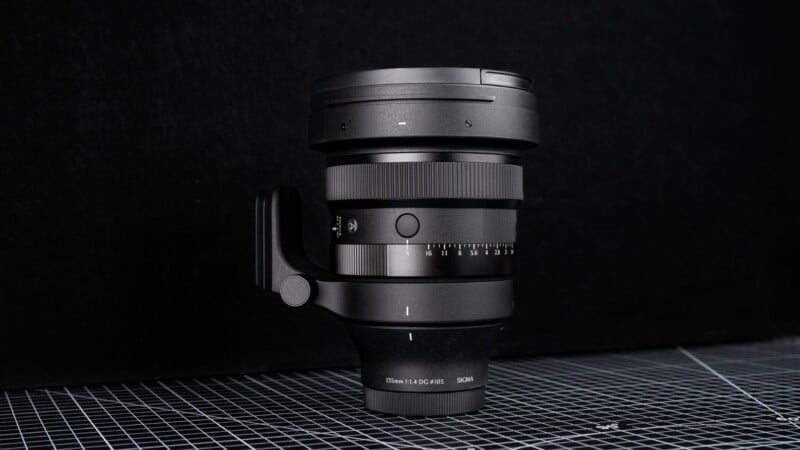
It’s worth pointing out that the large 105mm filter diameter means the screw-in filter will be hard to find, and if you do manage to, it will be very expensive. I ended up taping a Kondor Blue 4 x 5.65 four-stop ND to the front of the hood in order to balance my exposure when using a strobe. If filters are regularly used in your work, you’ll want to find a holder solution.
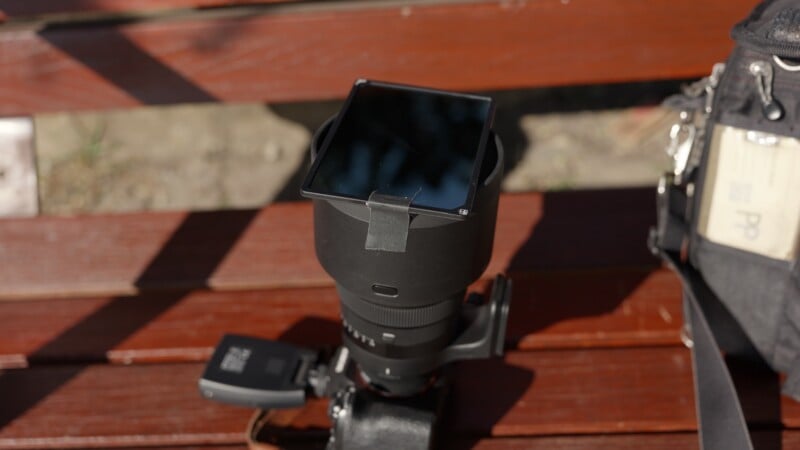
Sigma 135mm f/1.4 DG Art: How It Shoots
The Sigma 135mm f/1.4 DG Art utilizes Sigma’s latest linear motors, and despite the large lens elements, the autofocus is incredibly swift, bordering on instantaneous, when moving from minimum focus distance to infinity. This is incredibly important, as I suspect this lens will find itself used frequently for indoor sports. I brought it to my son’s hockey game and was thrilled to find it tracking swiftly and accurately throughout.
![]()
![]()
This is not a macro lens by any means, though. With a minimum focus of 1.1 meters or 3.5 feet, it offers an uninspiring macro reproduction ratio of 1:7.
![]()
![]()
Longitudinal chromatic aberrations, or LoCA, are often present in very fast aperture primes. This is where a color shift can be seen between the background and foreground areas. It’s quite distracting and, unfortunately, quite difficult to remove in editing. Fortunately, the Sigma has very little LoCA even wide open. This is an outstanding performance for such a bright prime.
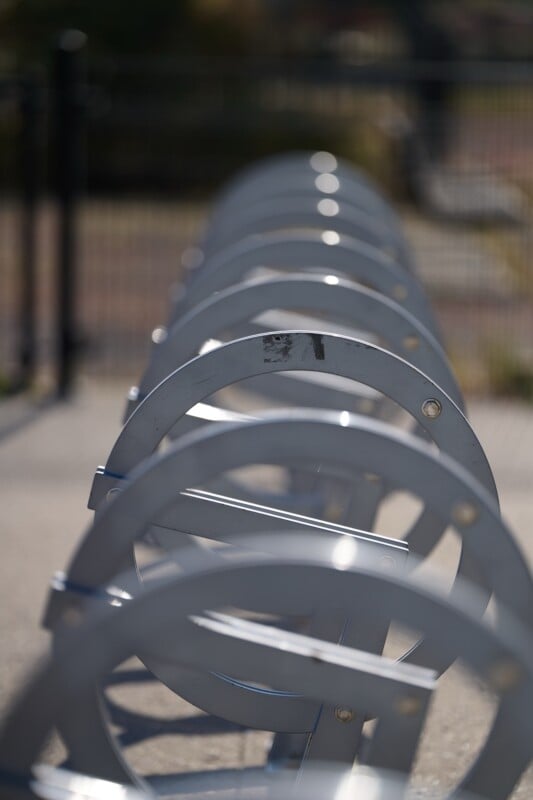
Flare is extremely well controlled with a very minor drop in contrast when shooting directly into bright light sources. Ghosting is next to non-existent, even when stopping the lens down. If you tend to shoot portraits backlit, this lens will reward you with lovely, contrasty images.

If you’re looking at a 135mm f/1.4, shallow depth of field is likely a priority, and this Sigma Art lens delivers truly gorgeous bokeh. Transitions into and out of the focal plane are incredibly smooth, drawing the eye to your intended subject. In terms of specular highlights, they look stunning, with no soap bubble effect or onion rings. Wide open, there is quite a bit of cat’s eye in the corners, but if you don’t like that aesthetic, it’s nearly gone by slightly stopping down to f/2.
![]()
![]()
This lens does deliver a unique look, so I can certainly see videographers wanting to use it as well. It’s worth taking a look at breathing, where the field of view shifts depending on your focus distance. Substantial breathing can be very distracting when pulling focus, and the Sigma 135mm f/1.4 DG Art exhibits a lot of breathing with a very noticeable zooming effect. Videographers and cinematographers will want to keep this in mind.
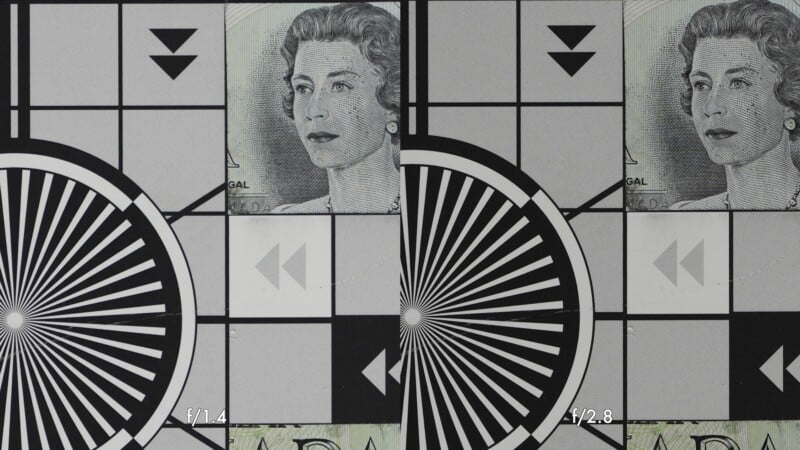

In terms of sharpness, this lens is a wonderful performer. In the center of the frame, wide open, the images are already tack sharp and very contrasty. Stopping down to f/2.8 leads to no real gains in image quality, as things are great right from f/1.4. Looking at the corners, there is a little softness and a minor drop in contrast wide open, but still very acceptable. Stopping down to f/2.8 gives flawless results across the frame. Simply put, with any current E- or L-mount camera body, this lens can deliver the maximum resolution they are capable of producing.
![]()
The Sigma 135mm f/1.4 DG Art Is a New Benchmark
![]() The Sigma 135mm f/1.4 DG DN is, effectively, optically flawless. Sure, it’s not a macro lens, and videographers will be dismayed by the breathing, but for its intended purpose of posed portraiture, candids, and sports photography, this lens has no weaknesses. I absolutely loved the aesthetic it can produce, especially for full-body shots taken from a distance.
The Sigma 135mm f/1.4 DG DN is, effectively, optically flawless. Sure, it’s not a macro lens, and videographers will be dismayed by the breathing, but for its intended purpose of posed portraiture, candids, and sports photography, this lens has no weaknesses. I absolutely loved the aesthetic it can produce, especially for full-body shots taken from a distance.
However, a big part of why I love 135mm lenses is that they can often achieve a 70-200mm f/2.8 look in a small, easy-to-carry package. That is not the case with this lens, as the size and weight make it more of a commitment to bring with you. That is a factor that will surely restrict its use. That said, it’s a necessary side effect of making such an incredibly bright, short telephoto lens. I have to commend Sigma for once again releasing a truly one-of-a-kind optic, even if it has the potential to inflict arm fatigue.
![]()
Are There Alternatives?
In L-Mount, the only comparable lens is Sigma’s old 135mm f/1.8 HSM, an older DSLR design that is positively trounced by this new optic.
In E-Mount, the Sony 135mm f/1.8 GM is a worthy competitor, weighing substantially less and also boasting fantastic performance and autofocus speed. However, the Sigma delivers equally sharp and more contrasty images at f/1.4 than the Sony can at f/1.8. If portability is not the top priority, the Sigma is the way to go.
Should You Buy It?
Yes. The only limitation of this lens is size and weight. If you can live with the sprained wrist, the Sigma is the undisputed king of the 135mm prime hill, and surprisingly affordable given its potential.